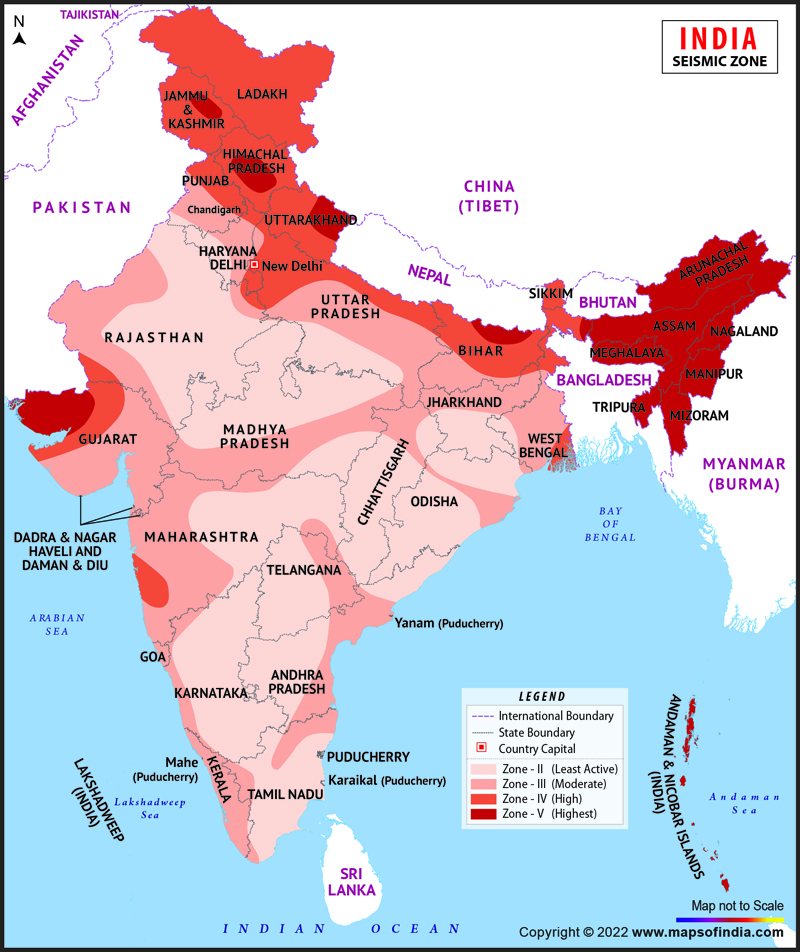To read about the Joshimath Crisis, click here.
According to the Journal of the International Society for the Prevention and Mitigation of Natural Hazards, almost 65% of India falls in high to very high seismic zones.

According to the revised IS 1983-2002 seismic code, seismic zones are mapped to a modified CIS-64 scale, an alternative to the MMI scale for seismic zoning.
|
Seismic Zones of India |
Intensity of the Seismic zone (based on modified CIS-64 scale) |
|
Zone II |
Areas that are prone to earthquakes mapped to intensity of VI and below |
|
Zone III |
Areas that are prone to earthquakes mapped to intensity VII |
|
Zone IV |
Areas that are prone to earthquakes mapped to intensity VIII |
|
Zone V |
Areas that are prone to earthquakes mapped to intensity IX and above |
Reference